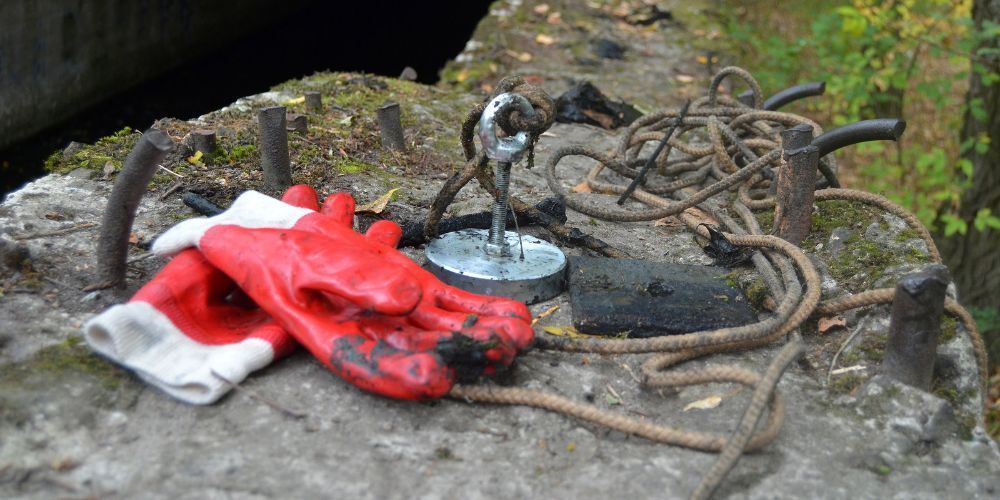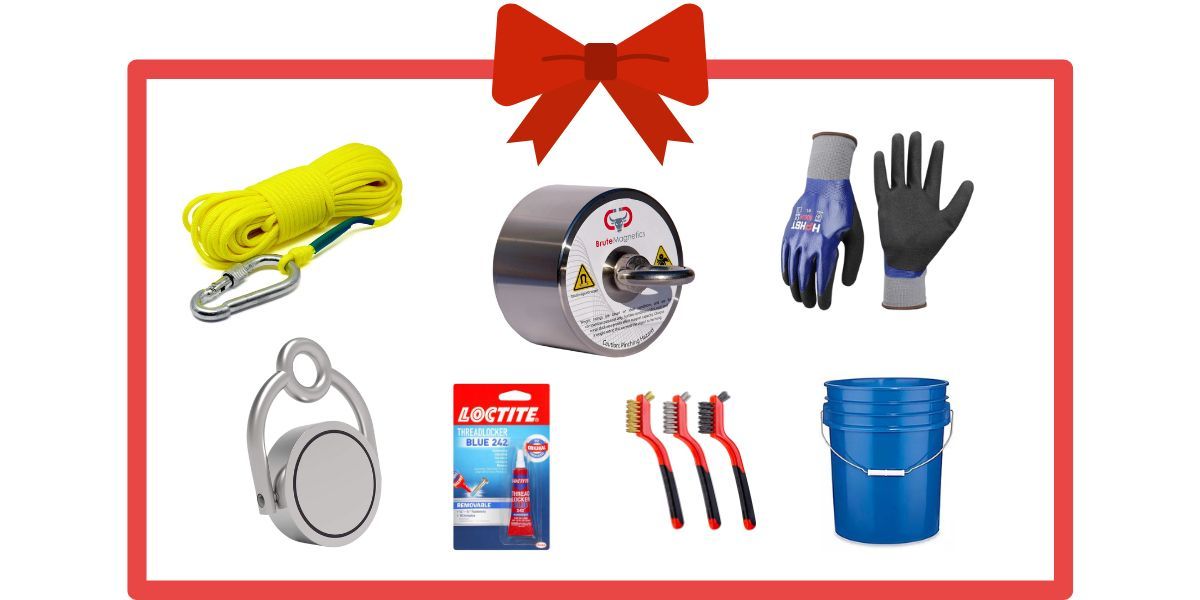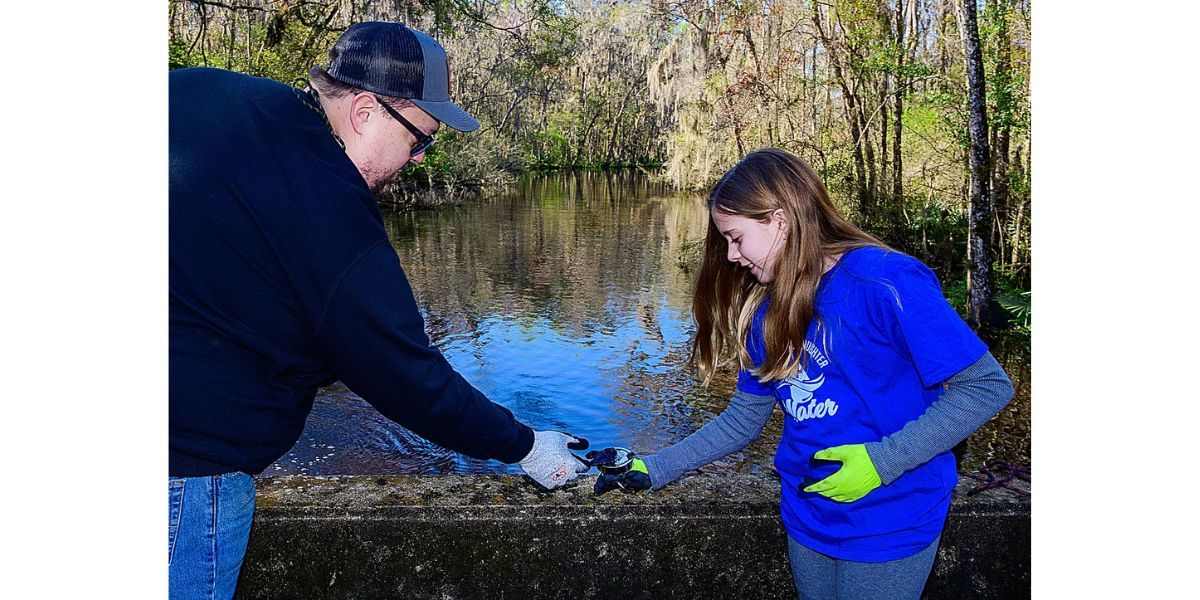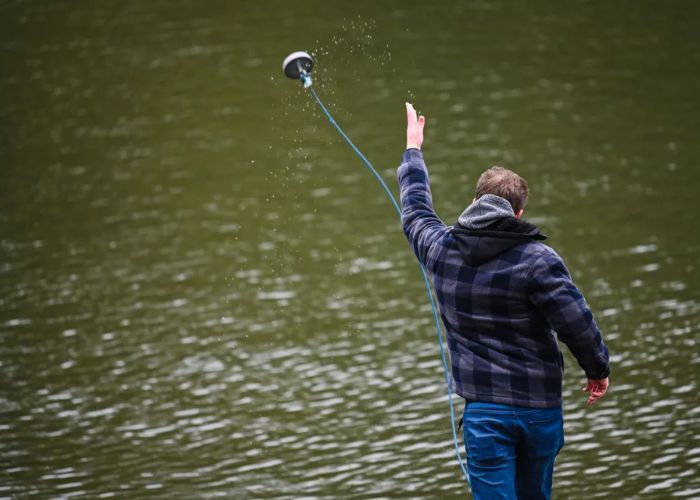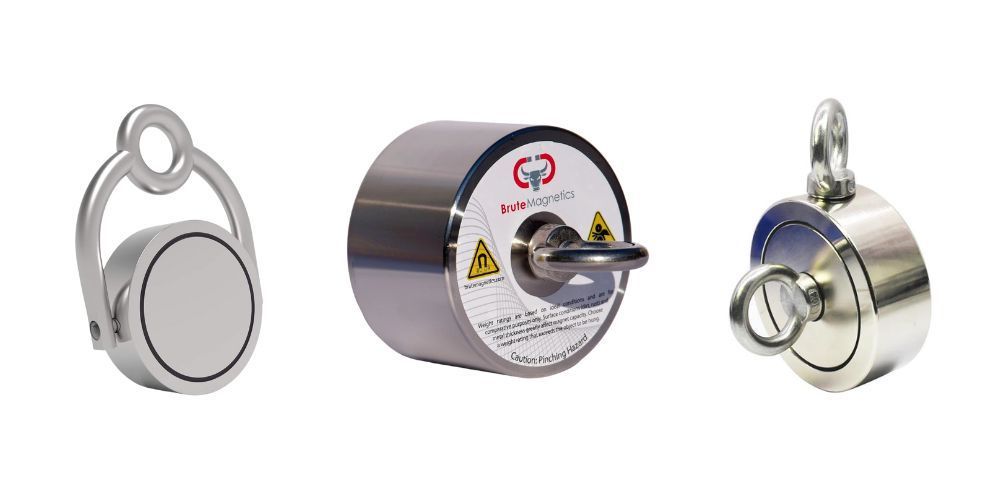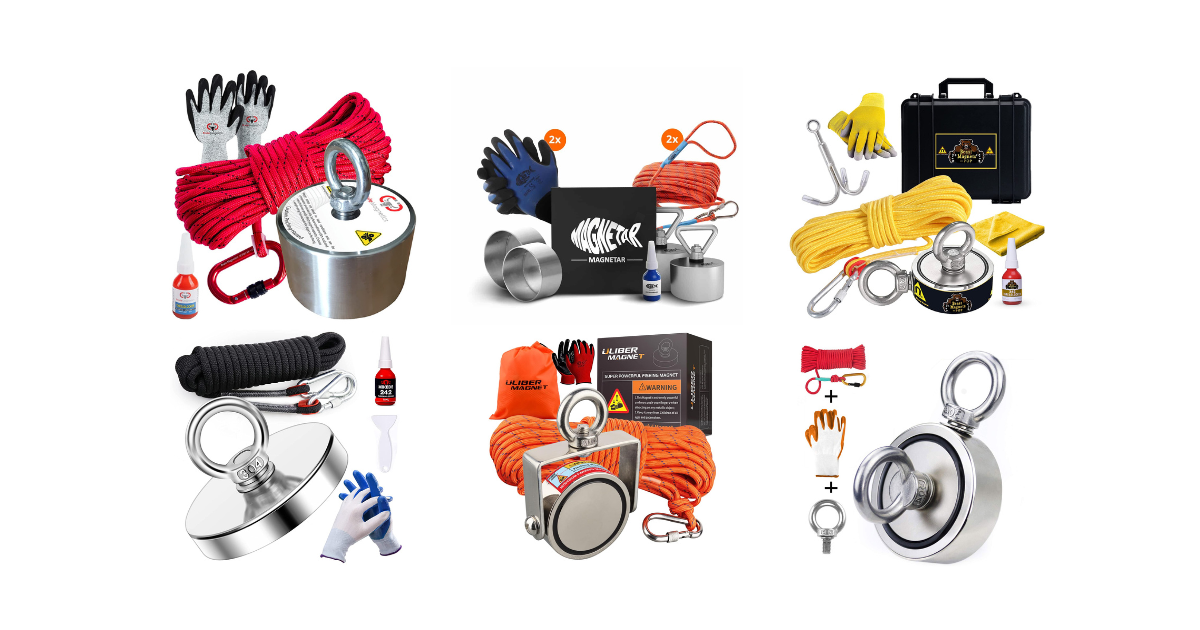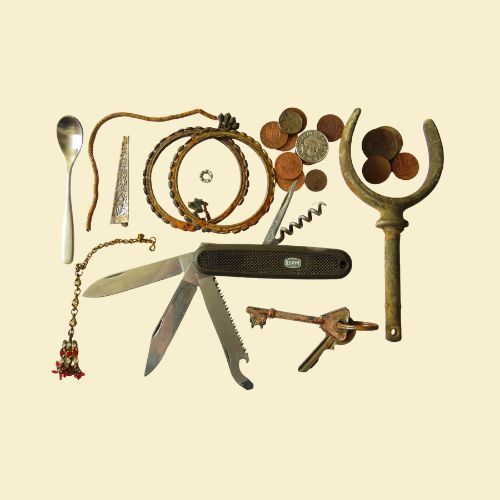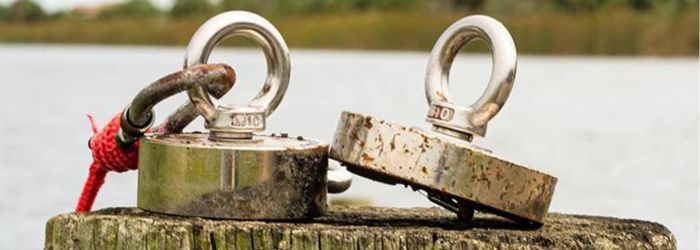Top Picks for Magnet Fishing Spots in Canada
From serene lakes to urban waterways, discover the top locations for magnet fishing in Canada

Magnet fishing in Canada is not just about the thrill of the find; it's about the story each location tells. From the urban waterways of Toronto to the historical sites of Halifax, here's a look at some of Canada's best magnet fishing spots and why they are must-visit locations for enthusiasts.
British Columbia
- Colquitz River (Victoria): A serene location perfect for peaceful magnet fishing, renowned for its tranquil atmosphere and the possibility of discovering artifacts with historical significance.
- Shuswap Lake, a spacious body of water, presents an ideal environment for engaging in magnet fishing as well as enjoying popular pastimes such as swimming and boating.
- Shoreacres Beach: A lesser-known treasure for magnet fishing, although it is important to exercise caution due to the presence of a partially submerged railroad tie.
- Comox (Fisherman's Wharf Boardwalk) attracts magnet fishers due to its pleasant weather conditions and popularity among both local fishermen and individuals practicing magnet fishing.
- Sooke (Sooke Marine Boardwalk): This less congested spot, renowned for its scenic hiking paths and picturesque harbor vistas, presents an excellent opportunity to uncover distinctive discoveries.
- The pier in Jericho offers a serene and well-liked spot for crabbing, providing an impressive vista of the cityscape and mountain range.
- Ambleside Pier, which is renowned for its accessibility and captivating sunset vistas, stands as the most expansive pier on Vancouver's north shore.
- Prospect Lake, which is well-liked by anglers and swimmers alike, features a convenient boat ramp that is perfect for engaging in the exciting activity of magnet fishing.
- Thetis Lake: Encompassing two lakes bordered by pathways and trails perfect for walking and hiking, this location offers opportunities for swimming and engaging in magnet fishing.
- Durrance Lake: Yet another peaceful spot suitable for engaging in magnet fishing activities.
- Vancouver Island offers a wide range of locations, making it an ideal magnet fishing destination.
- Cowichan Lake is a destination that provides a diverse range of recreational pursuits and ample chances for engaging in magnet fishing.
- The piers located at Trout Lake are renowned for their picturesque charm and the opportunities they present for magnet fishing.
- Stanley Park, renowned for its prominence, offers various prospects for engaging in urban magnet fishing.
- The location of Victoria's Sidney Pier presents a delightful fusion of rich historical allure and exciting magnet fishing opportunities.
- Gorge Bridge in the vicinity of View Royal, Victoria: A scenic location imbued with a sense of history.
Ontario
- Lake Ontario: Providing a vast area for magnet fishing, this expansive body of water is known as one of the largest lakes globally.
- Harry Allen Bridge (Green Creek): A bustling spot that offers great opportunities for discovering objects inadvertently discarded by pedestrians.
- Marina Quay West: Situated in downtown Toronto, this location serves as an ideal spot for engaging in the captivating activity of urban magnet fishing.
- HTO Beach is a publicly accessible shoreline located within close proximity to Marina Quay West, making it an ideal destination for enjoyable family excursions.
- On the Lower Don Trail are the bridges, which hold both historical importance and provide excellent opportunities for magnet fishing.
- The magnet fishing experience at the wall situated in Coronation Park provides magnet fishers with a distinctive urban environment.
- Sugar Beach: A well-liked city beach that presents a possibility for intriguing discoveries.
- The Thames River provides diverse opportunities for magnet fishing, with its rich historical and cultural importance.
Alberta
- Bower Ponds: Offering picturesque surroundings, this location holds promise for a wide range of discoveries.
- Twin Lake: Provides a peaceful environment for the activity of magnet fishing.
- Pier and Boat Launch (Alberta Beach): This location is popular among individuals engaging in recreational pursuits as well as magnet fishing enthusiasts.
- The North Saskatchewan River in Devon is renowned for its picturesque landscape and its excellent prospects for magnet fishing.
- Number five on the list is the storm ponds in the vicinity of Fort Calgary, known for its intriguing discoveries and urban backdrop.
- Louise Bridge or Mewata Bridge: These bridges are known for being common locations where a diverse range of items can be discovered as a result of frequent disposal practices.
Additional noteworthy sites
- The Redwood Bridge, located in Winnipeg, Manitoba: A bridge that has accumulated a fascinating assortment of discoveries over time.
- Sturgeon Creek, situated in Winnipeg, Manitoba, presents urban magnet fishing opportunities.
- Terence Bay, situated in Nova Scotia, is renowned for its picturesque landscapes and the promising opportunities it offers for magnet fishing.
- The Bedford boat ramp (Nova Scotia) is highly frequented by both local anglers and enthusiasts of magnet fishing.
- The Lachine Canal, situated in Montreal, Quebec, is an urban water passage that boasts a significant historical background.
- The Bridge on Visitation Island in Montreal, Quebec presents a distinctive magnet fishing adventure within an urban setting.
- The public dock at Ile Perrot (Montreal, Quebec) is renowned for being a popular spot for magnet fishing, with enthusiasts often discovering fascinating items.
In Canada, every one of these destinations presents a distinct magnet fishing encounter that caters to individuals with varying levels of expertise. The assortment of landscapes and potential discoveries makes Canada a perfect choice for those wishing to delve into the realm of magnet fishing.
Anticipated Discoveries While Magnet Fishing in Canada
In Canada, there are various locations that cater to both experienced and inexperienced magnet anglers, providing an array of opportunities for uncovering hidden treasures through the thrilling pastime of magnet fishing.
In the Canadian magnet fishing scene, individuals can anticipate discovering a diverse assortment of items, spanning from significant relics to commonplace belongings. With Canada's extensive and diverse network of waterways, which hold both historical value and serve as popular recreational destinations, there exists a fruitful environment for unearthing such treasures. Here is a summary of what you may discover:
Historical relics can often be discovered in areas abundant with historical significance, such as in proximity to ancient settlements or battlegrounds. These artifacts might encompass antique coins, military artifacts, or tools from previous eras.
Marine equipment, such as fishing hooks, lures, and remnants of previous boats or docks, are frequently encountered. It's common to retrieve ropes, anchors, or fragments of fishing nets in proximity to marinas and fishing spots.
Belongings of a personal nature, such as sunglasses, timepieces, keys, and even mobile phones or cameras, can frequently be discovered in lakes and rivers located within recreational zones. These items are commonly misplaced by both tourists and residents who indulge in aquatic leisure activities.
In areas that are more industrialized or in close proximity to construction sites, it is possible to come across tools, bolts, screws, and various other metal items that have inadvertently been dropped into the water.
Environmental waste is a regrettable occurrence that frequently emerges during magnet fishing. Such waste encompasses discarded bicycles, shopping carts, cans, and various other forms of debris. Although they may not be valuable finds, the act of removing these items aids in the cleanliness and conservation of Canada's waterways.
Arms: It is not entirely unusual to come across weapons such as blades, firearms, or munitions. When making such discoveries, it is important to exercise caution and promptly notify the appropriate local authorities, as these findings may have connections to criminal acts or historical importance.
Jewelry and Coins: Locations that experience significant pedestrian activity, such as public beaches or piers, have the potential to yield jewelry items like rings, bracelets, and necklaces, along with coins. While contemporary coins are frequently encountered, there is a possibility of occasionally unearthing older coins that hold potential value.
Railroad Collectibles: Alongside historical railway tracks or near bridges, it is possible to come across railroad spikes, couplers, and other metal components associated with the railway sector.
Uncommon and Unrecognizable Items: On occasions, the most captivating discoveries are those that pose a challenge when it comes to recognition. These enigmatic items encompass a spectrum of possibilities, spanning from antiquated machinery components to obscure metal fragments whose historical or cultural significance remains unknown.
When engaging in magnet fishing activities in Canada, it is imperative to conduct thorough research and adhere to the local regulations and laws, demonstrate respect towards private properties, and exercise caution while handling any potentially dangerous discoveries. Furthermore, it is vital to be prepared to appropriately dispose of any trash or non-precious metal items that are retrieved, thus making a positive contribution to the environment.
Indispensable Gear for Magnet Fishing
Magnet fishing, an increasingly popular pastime blending aspects of environmentalism and scavenging for valuables, necessitates specific gear to guarantee both fruitful outcomes and personal safety. Provided below is a compilation of indispensable equipment required for magnet fishing, or checkout our guide on best magnet fishing kits:
Strong Magnet: The foundation of your magnet fishing equipment is centered around a robust magnet. Neodymium magnets, renowned for their formidable magnetic force, are the preferred choice for their prevalent usage in this activity. The magnetic power is typically assessed in relation to its pulling force, and in most cases, a magnet with a pulling force ranging from 500 to 1,000 pounds is deemed satisfactory.
Rope: It is essential to utilize a sturdy and resilient rope for magnet fishing. The rope must possess sufficient strength to support the weight of both the magnet and any potential items it may retrieve. Furthermore, it is imperative for the grappling hook to possess sufficient length in order to adequately penetrate the depths of the body of water in which you are engaging in magnet fishing. A commonly recommended range for the length falls between 50 and 100 feet.
Gloves: Hand protection is imperative for ensuring safety while engaging in activities involving gloves. They serve the vital purpose of safeguarding your hands from potential harm caused by sharp objects, as well as offering enhanced grip on the rope, particularly when extracting heavy items from aquatic environments.
Threadlocker: Serves as an adhesive employed to effectively fasten the eyelet screw of the magnet, preventing it from loosening while in use. The application of a robust threadlocker guarantees that the magnet remains firmly attached to the rope, minimizing the chances of detachment.
Grappling Hook: Although not necessary, a grappling hook can prove to be highly advantageous, particularly when it comes to recovering bulkier items or objects that are challenging for the magnet to grasp onto. Additionally, it can assist in dislodging the magnet in the event that it becomes stuck.
Bucket or Durable Bags: These can prove to be advantageous when transporting your discoveries. Additionally, it is recommended to remove any waste or fragments collected from the water sources as a responsible measure.
Waterproof Bag or Case: This item is designed specifically for the purpose of safeguarding your phone, keys, and other personal belongings from water damage or potential loss while engaging in magnet fishing activities.
Scraping tool or Bristle implement: On occasions when items retrieved from the water are coated with mud or detritus, having a scraping tool or a bristle implement assists in removing the grime to discern your discoveries.
Suitable Attire: Depending on the prevailing conditions and specific setting, it is advisable to don apparel that you are comfortable with potentially soiling or dampening. On certain occasions, it might be essential to wear waterproof boots or waders.
Having a basic first aid kit on hand is consistently recommended for any outdoor undertaking, as it can prove to be indispensable in the event of encountering sharp objects or other potential dangers.
Keep in mind that the necessary equipment for each magnet fishing expedition may vary depending on the specific location and conditions. Hence, it is important to make appropriate preparations. Moreover, it is imperative to thoroughly examine the local statutes and regulations pertaining to magnet fishing, as certain regions may impose restrictions or guidelines on this activity.
Author: Will Flaiz


